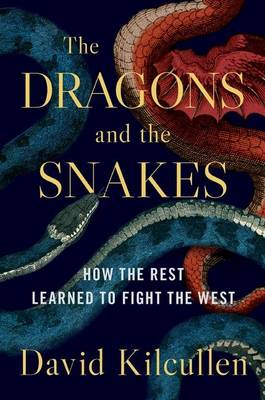
- Retrait gratuit dans votre magasin Club
- 7.000.000 titres dans notre catalogue
- Payer en toute sécurité
- Toujours un magasin près de chez vous
- Retrait gratuit dans votre magasin Club
- 7.000.0000 titres dans notre catalogue
- Payer en toute sécurité
- Toujours un magasin près de chez vous
The Dragons and the Snakes
How the Rest Learned to Fight the West
David Kilcullen
Livre relié | Anglais
44,45 €
+ 88 points
Format
Description
A counterintuitive examination into how, and what, opponents of the West have learned during the last quarter-century of conflict. Just two decades ago, observers spoke of the US as a "hyperpower"--a nation with more relative power than any empire in history. Yet as early as 1993, CIA director James Woolsey pointed out that although Western powers had "slain a large dragon" by defeating the Soviet Union, they now faced a "bewildering variety of poisonous snakes." In The Dragons and the Snakes, the eminent soldier-scholar David Kilcullen asks how, and what, opponents of the West have learned during the last quarter-century of conflict. Applying a combination of evolutionary theory and detailed field observation, he explains what happened to the "snakes"--non-state threats including terrorists and guerrillas--and the "dragons"--state-based competitors such as Russia and China. He explores how enemies learn under conditions of conflict, and examines how Western dominance over a very particular, narrowly-defined form of warfare since the Cold War has created a fitness landscape that forces adversaries to adapt in ways that present serious new challenges to America and its allies. Within the world's contemporary conflict zones, state and non-state threats have increasingly come to resemble each other, with states adopting non-state techniques and non-state actors now able to access lethal weapon systems once only available to governments. A counterintuitive look at a vastly more complex conflict environment, this book both reshapes our understanding of the West's adversaries and shows how we can respond given the increasing limits on US power.
Spécifications
Parties prenantes
- Auteur(s) :
- Editeur:
Contenu
- Nombre de pages :
- 336
- Langue:
- Anglais
Caractéristiques
- EAN:
- 9780190265687
- Date de parution :
- 03-03-20
- Format:
- Livre relié
- Format numérique:
- Genaaid
- Dimensions :
- 163 mm x 239 mm
- Poids :
- 612 g

Les avis
Nous publions uniquement les avis qui respectent les conditions requises. Consultez nos conditions pour les avis.






